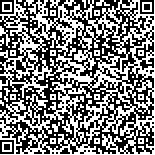| 引用本文: | 颜春鲁,安方玉,刘永琦,王继龙,刘雪松,赵文坤,杨晓蓉,潘婷.瞿麦汤调控Nrf2/ARE信号通路对肾草酸钙结石大鼠氧化应激损伤作用机制研究[J].中国现代应用药学,2019,36(17):2119-2123. |
| YAN Chunlu,AN Fangyu,LIU Yongqi,WANG Jilong,LIU Xuesong,ZHAO Wenkun,YANG Xiaorong,PAN Ting.Mechanism Exploration of Qumai Decoction on the Oxidative Stress Damage in Calcium Oxalate Stone Rats via Nrf2/ARE Signal Pathway[J].Chin J Mod Appl Pharm(中国现代应用药学),2019,36(17):2119-2123. |
|
| |
|
|
| 本文已被:浏览 2546次 下载 1564次 |

码上扫一扫! |
|
|
| 瞿麦汤调控Nrf2/ARE信号通路对肾草酸钙结石大鼠氧化应激损伤作用机制研究 |
|
颜春鲁1,2, 安方玉1,2, 刘永琦1,2, 王继龙1,2, 刘雪松1, 赵文坤1, 杨晓蓉1, 潘婷1
|
|
1.甘肃中医药大学, 兰州 730000;2.敦煌医学与转化教育部重点实验室, 兰州 730000
|
|
| 摘要: |
| 目的 研究敦煌医方瞿麦汤对肾草酸钙结石模型鼠核因子E2相关因子2(nuclear factor erythroid-2 related factor 2,Nrf2)/抗氧化反应原件(antioxidant response element,ARE)信号通路的影响,探讨其机制。方法 60只SD大鼠随机分为空白对照组、模型组、肾石通颗粒(5 g·kg-1)组和敦煌医方瞿麦汤高、中、低剂量(20,10,5 g·kg-1)组。除空白对照组外,其余各组大鼠采用1%乙二醇+2%氯化铵的溶液联合灌胃法制备大鼠肾草酸钙结石模型,同时给予相应药物,连续28 d。末次给药结束后,检测各组大鼠的体质量、肾指数,检测大鼠血清中SOD活性、MDA含量、T-AOC含量,HE染色法观察各组大鼠肾组织的病理形态学变化,RT-PCR法检测肾组织Nrf2 mRNA和NQO1 mRNA的表达,免疫组化法检测肾组织Nrf2和ARE的蛋白表达。结果 与空白对照组比较,模型组大鼠肾指数和MDA的含量均增加(P<0.05),其体质量、SOD活性、T-AOC含量、Nrf2的基因表达和蛋白表达均下降,NQO1的基因表达下降(P<0.05),ARE的蛋白表达下降(P<0.05);与模型组比较,敦煌医方瞿麦汤各剂量组肾指数下降(P<0.05),其体质量升高(P<0.05);敦煌医方瞿麦汤中、高剂量组MDA含量下降(P<0.05),Nrf2 mRNA和NQO1 mRNA的表达均升高(P<0.05),Nrf2和ARE的蛋白表达均升高(P<0.05);高剂量组T-AOC含量升高(P<0.05)。结论 肾草酸钙结石模型鼠存在氧化应激损伤,敦煌医方瞿麦汤可通过上调Nrf2/ARE信号通路相关因子表达抑制肾结石的形成来发挥治疗作用。 |
| 关键词: 瞿麦汤 肾结石 氧化应激 |
| DOI:10.13748/j.cnki.issn1007-7693.2019.17.002 |
| 分类号:R285.5 |
| 基金项目:敦煌医学与转化省部共建教育部重点实验室开放基金项目(DHYX17-08,DHYX17-09);甘肃省教育厅就业创业能力提升工程项目(6-1);甘肃中医药大学教学研究与教学改革项目(ZH-201606) |
|
| Mechanism Exploration of Qumai Decoction on the Oxidative Stress Damage in Calcium Oxalate Stone Rats via Nrf2/ARE Signal Pathway |
|
YAN Chunlu1,2, AN Fangyu1,2, LIU Yongqi1,2, WANG Jilong1,2, LIU Xuesong1, ZHAO Wenkun1, YANG Xiaorong1, PAN Ting1
|
|
1.Gansu University of Traditional Chinese Medicine, Lanzhou 730000, China;2.Key Laboratory of Dunhuang Medicine, Ministry of Education, Lanzhou 730000, China
|
| Abstract: |
| OBJECTIVE To investigate the nuclear factor erythroid-2 related factor 2/antioxidant response element (Nrf2/ARE) pathway effect of Dunhuang Yifang Qumai decoction on calcium oxalate nephrolithiasis rats and explore its possible mechanism. METHODS Sixty male SD rats were randomly divided into six groups:blank control group, model group, Shenshitong granules group(5 g·kg-1), high, middle and low dose group of Dunhuang Yifang Qumai decoction(20, 10, 5 g·kg-1). Except those in the blank control group, calcium oxalate nephrolithiasis model rats were induced by 1% ethylene glycol and 2% ammonium chloride(2% NH4Cl), and treated with corresponding drugs for 28 d. After the last treatment, the body weight and the kidney index were monitored of each group, the levels of SOD, MDA and T-AOC in serum were detected and the pathomorphological changes of renal tissue were observed by HE stain, the expression levels of Nrf2, NQO1 mRNA were analyzed by RT-PCR, the expression levels of Nrf2, ARE protein were observed by immunohistochemistry. RESULTS Compared with blank control group, MDA content, kidney index obviously increased in model group(P<0.05), and weight body, SOD activity, T-AOC content, Nrf2 gene expression, NQO1 gene expressions, Nrf2 protein expression, ARE protein expression significantly decreased in model group (P<0.05). Compared with model group, Qumai decoction could significantly reduce the index of kidney, Qumai decoction could significantly increase the weight body; at the same time, high and middle dose group of Qumai decoction could obviously decrease the content of MDA, increase the activity of SOD, and increase the expression levels of Nrf2, NQO1 mRNA and the expression levels of Nrf2, ARE protein (P<0.05); high dose group of Qumai decoction could obviously increase the level of T-AOC (P<0.05). CONCLUSION Harmed oxidative stress in calcium oxalate nephrolithiasis model rats, Dunhuang Yifang Qumai decoction could effectively inhibit the formation of calcium oxalate stone in rats via increasing the relevent cytokines expressions of Nrf2/ARE pathways. |
| Key words: Qumai decoction nephrolithiasis oxidative stress |
|
|
|
|
